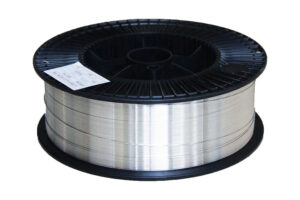The common materials for cold-formed springs
 Production of cold-formed springs
Production of cold-formed springs
The cold-formed springs include compression spring, torsion spring, extension spring and Wire Forms.
The precision of cold-formed springs is higher than that of hot-formed springs, and the surface and internal quality are also better. The materials used for cold-formed springs are generally disc-shaped steel wires and round steel bars with a diameter of approximately 0.08 to 20mm, or square steel and shaped steel wires with sides less than 10mm, or strip steel and flat steel of similar sizes.
The supply status of materials is usually divided into two categories: one is a hard state, which already has the mechanical properties required by springs, and only needs stress relief annealing after forming; the other is a soft state (annealed state), which requires quenching and tempering as well as stress relief annealing after forming in order to obtain the desired properties.
Spring Materials
The common materials for cold-formed springs can be classified into several types based on the different heat treatment methods after forming:
- The first type doesn’t require quenching, and the spring only needs stress relief annealing after forming. This type mainly includes carbon spring steel wire, high-quality carbon spring steel wire, piano wire, stainless steel wire for springs, and various oil-quenched and tempered steel wires.
- The second type only requires aging treatment after forming, including beryllium bronze wire and alloy for spring components.
- The third type requires quenching and tempering treatment after forming, mainly including annealed and hot-rolled materials such as hot-rolled spring steel wire, silicon-manganese spring steel wire, chromium-vanadium spring steel wire, and chromium-silicon spring steel wire.
With the development of the metallurgical industry and the continuous improvement in spring performance requirements, in order to reduce equipment investment, lower production costs, shorten production cycles, improve product quality and economic benefits, it is preferable to use materials that only require stress relief annealing after forming, i.e., the first type of material. It is advisable to avoid using materials that require quenching and tempering treatment after coiling, i.e., the third type of material.
The second type, which requires aging treatment (hardening and tempering treatment) after forming, is more commonly used for springs with special requirements, such as corrosion resistance, weak magnetic conductivity, etc.






